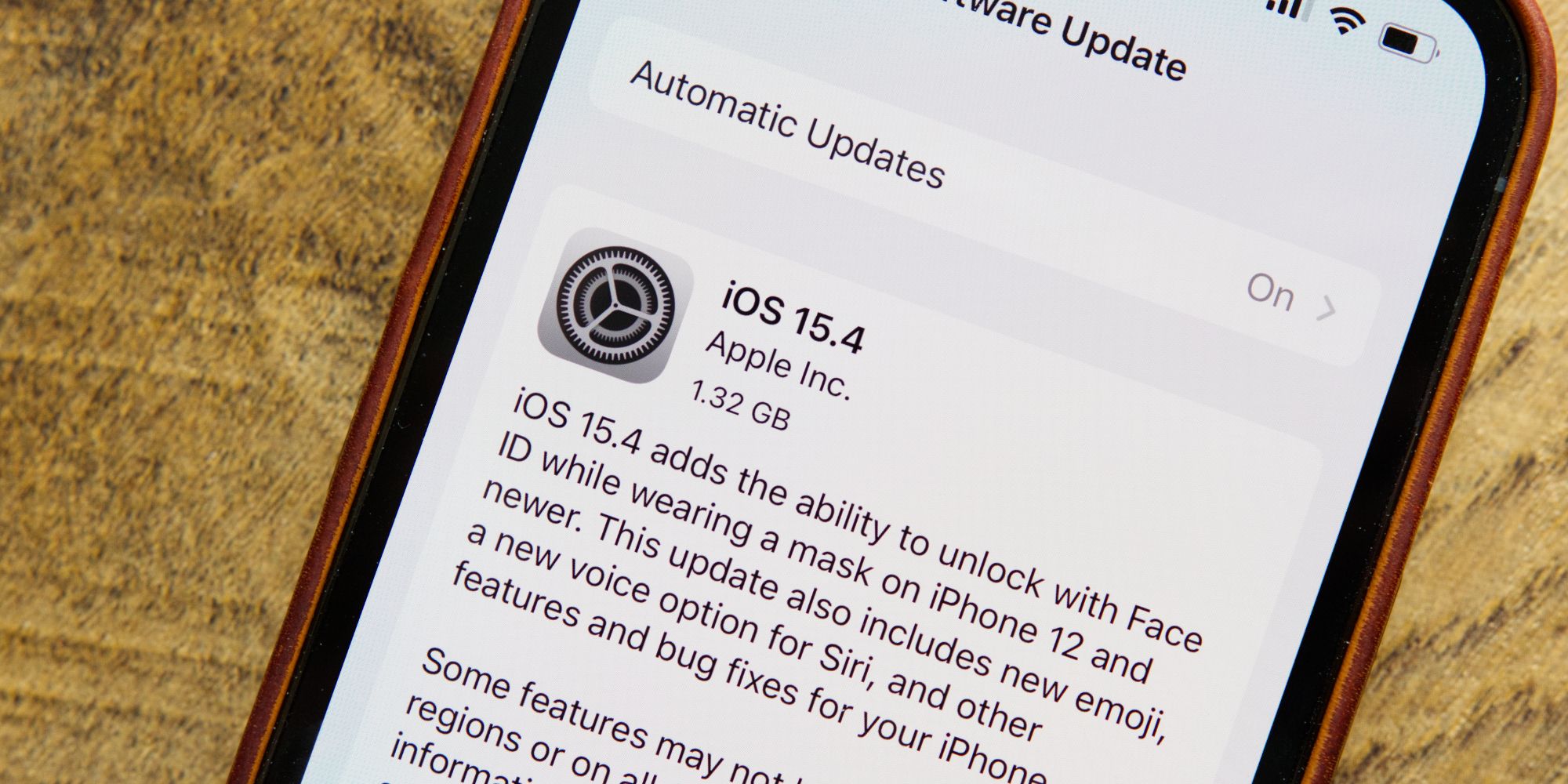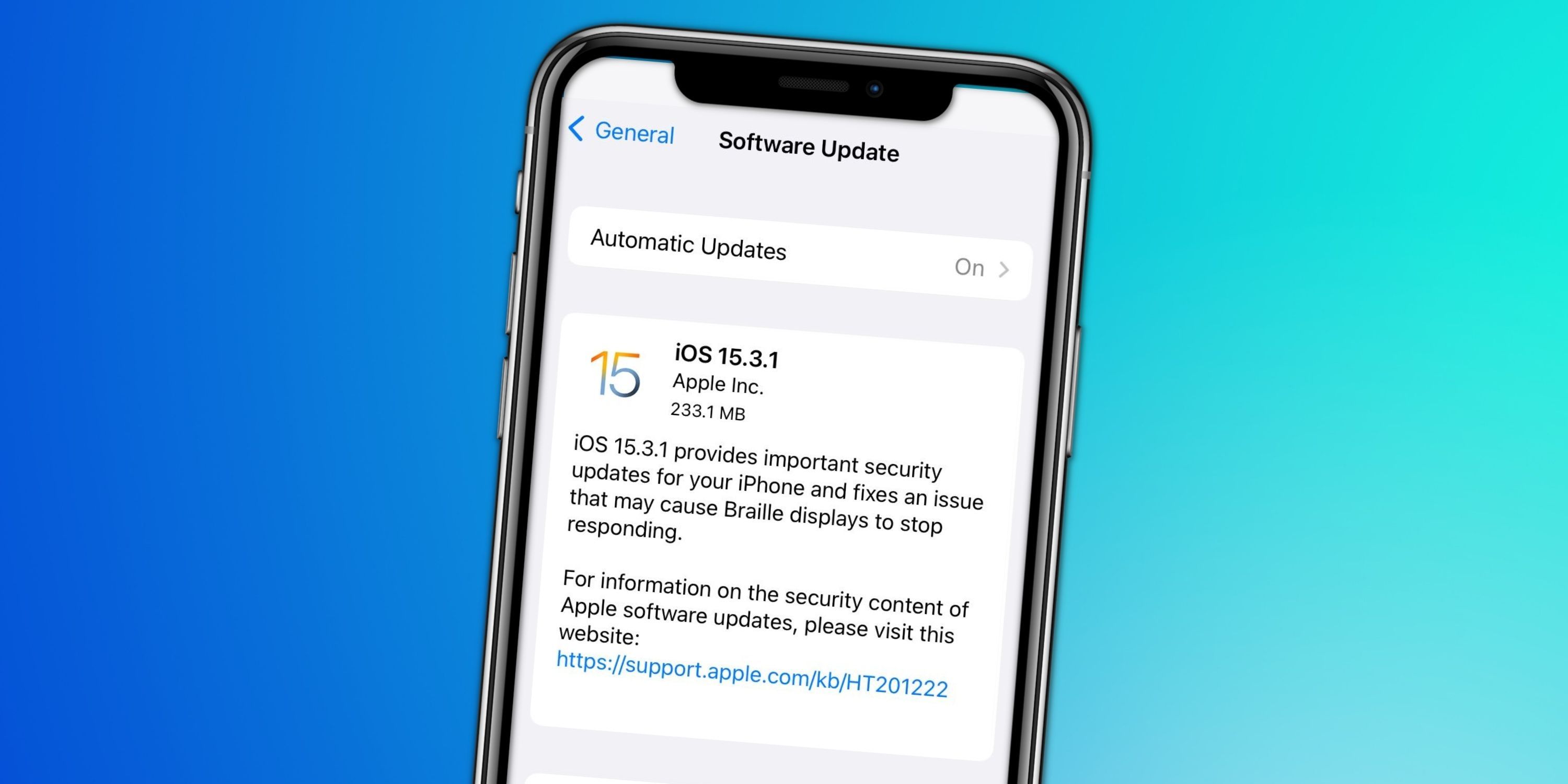iPhones can be set up to auto-update to the latest software, but in some cases, it might be more beneficial to manually update iOS. iPhones are among the most popular smartphones in the world, and users rely on them for critical tasks. From managing work on the go to staying in touch with friends and family, to taking high-quality photos, a user's iPhone should work as they would expect. However, without knowing exactly what changes an update will make to the usability of an iPhone, users risk being surprised by adjustments or bugs, inhibiting their workflow. It's easy to get used to the muscle memory of habitual actions performed on an iPhone, but a single update automatically pushed to a device can disrupt this stability.
The ability to set up auto-updates on iPhones has been a long-standing feature used by people who want to experience the latest software when it releases. The auto-update option is found in Settings, and once enabled, an iPhone will automatically update to the latest iOS version when it becomes available. However, there are a few conditions that must be met to automatically update an iPhone. Automatic updates typically happen at night when an iPhone is not likely to be in use, and can require passcode authorization beforehand. iPhones must also be connected to a Wi-Fi network and a power source in order for the update to be automatically installed overnight.
As convenient as automatic updates are, they can have a detrimental impact on the daily use of an iPhone. Specifically, Apple has confirmed that users might experience irregularities with battery life in the days following an update. "It's normal for your apps and features to need to adjust up to 48 hours after an update," Apple Support noted in a tweet. When manually updating an iPhone, users can be prepared for their device to experience inconsistent battery life following the installation. The battery may drain quicker than usual after updating to a new version of iOS, and if an update is automatically installed, users could find themselves facing battery drain issues at a time when their iPhone is needed most.
Auto-Updates Can Be Buggy
Another consequence of auto-updates is that users might not know exactly what is being modified on their device, leading to unwanted or unexpected changes. For example, the latest full release of iPadOS brought significant changes that impacted the workflow of many iPad users. When iPadOS 15 was unveiled at WWDC, the most recognizable change was the Home Screen. The previous version of Apple's software featured a sidebar on the Home Screen, where users could see the date, time, and a collection of widgets. In the update, the sidebar was eliminated in favor of a grid that could hold both apps and widgets. Unfortunately for iPad users, the grid format resulted in an absurd amount of dead space at the edges of the Home Screen. For people who had auto-updates enabled when iPadOS 15 was released, their iPad's functionality was altered without recourse for reverting to the older Home Screen.
Aside from feature changes, there are security concerns that can arise with being an early adopter of newly-released updates. Although Apple extensively tests new software with internal, developer, and public beta releases, some bugs may slip through the cracks after an update is widely rolled out. In February 2022, an early release of iOS 15 sent audio recordings to Apple from iOS devices without users' knowledge. A bug within the update automatically enabled the 'Improve Siri and Dictation' setting, which sends audio recordings to the company. The issue was eventually resolved, and voice recordings deleted, but users who were among the first to update to the new iOS 15 release unknowingly risked their privacy. In some cases, waiting for days or weeks following an update's rollout can limit the effect of bugs and software issues.
It's certainly easy to enable the auto-update setting on iPhones and forget about manually checking for new updates which may bring new features or critical security fixes. However, it's just as possible that the automatic update could have a detrimental effect on an iPhone user's daily use, with issues like battery drain, graphical user interface (GUI) changes, and bugs prominent in the early days of a software update's release. With that in mind, it's worth considering whether it is better to turn off auto-updates in favor of manually enabling changes to an iPhone.
Source: Apple Support/Twitter


